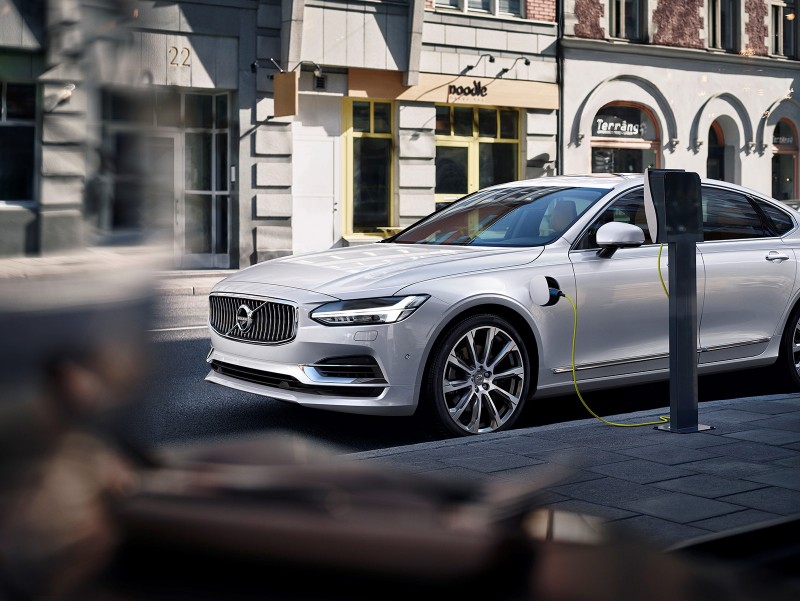Volvo Cars believes the global automotive industry should strive towards the introduction of a standardised charging infrastructure for electric cars, says Dr Peter Mertens, the company’s Senior Vice President for Research & Development. To support the drive towards a global standard for electric car charging, Volvo Cars has decided to throw its weight behind the Charging Interface Initiative, a consortium of stakeholders that was founded to establish their Combined Charging System (CCS) as the standard for charging battery-powered vehicles.
Volvo are not alone in their plight to make CCS the charging standard, with the majority of German car makers favouring CCS over CHAdeMO, which is more commonly used in Asia and pre-dates CCS.
Volvo Cars is fast becoming a leading manufacturer of plug-in hybrid cars and will offer a plug-in hybrid variant of every new model as it replaces its entire product portfolio in the coming years. It will introduce a fully electric vehicle by 2019, based on its modular SPA vehicle architecture, which will presumably offer CCS rapid charging. Volvo previously built a C30 electric car as a test bed ahead of bringing out a production model.
In order to cement the increasing popularity of electric vehicles and ensure that customers fully embrace the technology, Dr Mertens argues that a simple, standardised, fast and global charging infrastructure is needed. Dr Mertens said,
“We see that a shift towards fully electric cars is already underway, as battery technology improves, costs fall and charging infrastructure is put in place. But while we are ready from a technology perspective, the charging infrastructure is not quite there yet. To really make range anxiety a thing of the past, a globally standardised charging system is sorely needed.”
The Combined Charging System, which offers both regular and fast-charging capabilities, makes electric car ownership increasingly practical and convenient – especially in urban environments, which are ideal for electric vehicles. It combines single-phase with rapid three-phase charging, using alternating current at a maximum of 43 kilowatts (kW), as well as direct-current charging at a maximum of 200 kW and the future possibility of up to 350 kW – all in a single system. This differs from the CHAdeMO standard that does not currently support charging rates at the same level. However, both charging solutions currently operate at about 50kW DC when at an actual recharging station.
The Charging Interface Initiative is currently in the process of drawing up requirements for the evolution of charging-related standards and certification for use by car makers around the globe. Dr Mertens said,
“We are very happy to support and be involved in the setting of standards for electric vehicle charging systems. The lack of such a standard is one of the main obstacles for growing electric vehicles’ share of the market.”
In a slight irony, Volvo’s latest plug-in hybrid vehicles don’t support rapid charging at all and instead are only able to recharge at 3.5kW (16Amps), the idea being that owners of plug-in hybrid vehicles won’t need rapid charging as instead they’ll charge at home overnight. Contrary to this, Mitsubishi’s hugely popular Outlander PHEV has both slow charging and CHAdeMO allowing owners to top-up rapidly at many service stations and thus drastically improve their fuel economy since they are less reliant on the petrol engine.
Time will tell whether a single charging standard will emerge, but it is safe to say that for now CHAdeMO isn’t going to disappear anytime soon.
Source; Volvo

